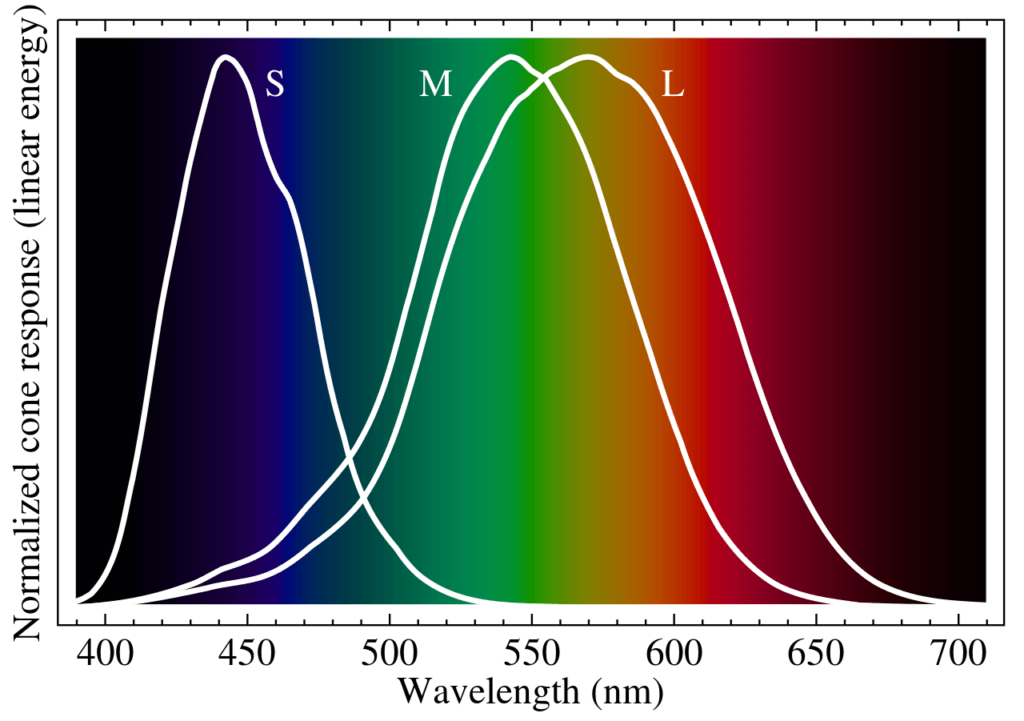Have you ever wondered why night-vision goggles display green images?
Part of the answer is that it’s a lot easier (and less expensive) to do monochrome night vision than it is to enable full-color night vision. But that doesn’t explain why night vision is green. Why isn’t it black-and-white like early televisions? Or why didn’t the inventors of night vision choose to create goggles that see in red or blue or purple instead?
It turns out that human beings see green better than any other color. Unless you are one of the 15% to 50% of women who are tetrachromatic, you have three types of cones in your eyes: one type that is especially good at seeing red, one that is especially good at seeing green, and one that is especially good at seeing blue. However, even though each kind of cone is particularly good at seeing one color, they overlap a bit, and there is the most overlap in the center of the visible spectrum — where green is. Image source: Wikipedia
Image source: Wikipedia
As a result, human eyes experience the least stress when looking at green images for a long period of time. They also see the most sharply in the green part of the spectrum.
In addition, our eyes can see more shades of green than any other color. By “shades,” we don’t mean that they can distinguish between teal and chartreuse. Those are different hues. The technical definition for a shade is a color variation created by adding black to a particular hue — and that’s exactly the kind of color variation produced by most night-vision goggles.
It turns out that if you are going to be viewing a monochromatic image, you will see the most detail if that image is green. And that can be very important if you’re a helicopter pilot trying to avoid a tree or a soldier trying to find the bad guys.
This is a really good parallel to the world of pricing. If you can create a model that has more detail — that is, more granularity — you’ll be see what’s happening more clearly. You’ll have a more accurate representation of the real world. And in much the same way that night vision allows soldiers to hit their targets, a more detailed pricing model will make it easier for you to hit your pricing and margin targets.
So how do you go about creating a model with the right level of granularity?
Check out The Fundamentals of Price Segmentation. It provides a very good introduction to the key conceptions of the discipline, while also providing step-by-step instructions and some helpful tips.
You should also watch Price Segmentation Attributes. It can help you figure out which attributes are likely to be important as you develop your model.
Sometimes setting prices feels a lot like taking a stab in the dark. In the same way that night-vision goggles can help you see in low-light conditions, a good pricing model can help you get more visibility into what seem like opaque market conditions.
And if this blog has gotten you curious about night vision, check out the Night vision article from ExplainThatStuff!
The Fundamentals of Price Segmentation
Price Segmentation Attributes















